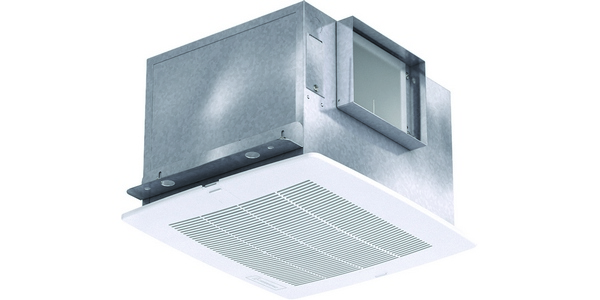HVAC Fire Life Safety is a Concern for Commercial Buildings
FAIRFAX, Va. – On Nov. 21, 1980, 85 people died at the 26-floor MGM Grand Hotel and Casino in Las Vegas when a fire ignited inside the wall of the deli on the first floor. The investigation determined that the fire and smoke dampers, designed to stop fire and smoke from traveling through the building via the ventilation system, had failed. Many of those who perished died of smoke inhalation.
According to the Clark County Fire Department’s investigation report, the dampers in the main unit over the casino were “bolted in such a manner as to make them inoperable” and “products of combustion were distributed through the tower by the [heating, ventilating and air conditioning (sic)] HVAC equipment.”
In Cleveland, unionized sheet metal workers use examples such as the MGM Grand fire to raise awareness of HVAC Fire Life Safety with building inspectors, fire officials and building owners and put men and women to work in the process.
The National Energy Management Institute Committee continually identifies emerging market opportunities – such as HVAC fire life safety – that provide additional work for the unionized sheet metal and air conditioning industry. NEMIC also educates thousands of building inspectors and fire officials across the country on the importance of fire life safety, and they work to get members certified for maintenance and inspection.
Smoke and fire dampers help first responders do their jobs by containing smoke in affected areas and keeping pathways clear in order for them to rescue occupants and fight the fire.
“When I learned about this, I realized this is something that can really save lives,” said Bernie Brill, executive director for Sheet Metal and Air Conditioning Contractors’ National Association Mid-Atlantic chapter. “I was dumbfounded people conduct inspections of extinguishers and alarms but are not looking at dampers.”
Creating awareness and training workers to complete the maintenance and inspections are the first steps. Although HVAC Fire Life Safety is common in hospitals, owners of other large buildings – like the former MGM Grand – don’t realize what can happen when dampers fail until they do.
Technicians and inspectors have the knowledge to keep systems in working order, and HVAC contractors who want to provide the service can add HVAC Fire Life Safety to their list of services with minimal financial impact, said Chuck Holt, director of research for NEMIC.
“If contractors have workers with certifications, they can get work,” Holt added. “Certifications are free to contractors, free to the workers.”
Presentations by NEMIC and the SMACNA Mid-Atlantic chapter to building inspectors and fire officials provide additional education and information. The chapter has provided these presentations to officials in Upper Marlboro, Prince George’s County in Maryland; the University of Maryland Fire Training Academy in College Park, Md.; Fairfax County, Va.; Arlington County, Va.; Washington, D.C. and Richmond, Va.
During the presentations, professionals learn how dampers are supposed to work and why some fail. It’s estimated that from 50 to 70 percent of smoke and fire dampers in buildings may not work correctly because they haven’t been properly serviced or inspected.
For more information on emerging market opportunities in the sheet metal and air conditioning industry, contact the National Energy Management Institute Committee at www.nemionline.org or call 703-739-7100.



